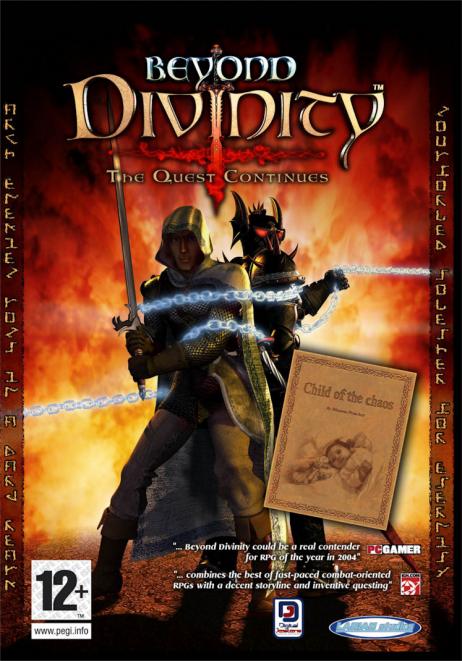Beyond Divinity Review
-
Category: ReviewsHits: 19753

Article Index
Page 2 of 2
The skill system is also a mixed bag. As mentioned, the potential for customization is unlimited. The players start with one skill tree, but can unlock other ones with either books or by purchasing them from NPCs, for example pick pocket level 6. The character does not instantly learn the skill, however. He must still spend skill points to actually advance. The skills are also shared between the hero, the Death Knight, and any summoned creatures. The player only need unlock it once, and then it becomes available to everyone in the party. This is an interesting concept that sounds better than it actually plays out, unfortunately. The combat system is also a familiar click and point affair. If you click on an enemy, you'll attack him. While the computer controlled group characters will automatically attack an enemy, the player controlled character will just stand around while the enemies beat on the character until you decide to engage them. And the computer controlled party AI isn't particularly smart, often charging into melee with overwhelming enemies when they may have safer weapons available for use. While most of the game is played by the hero and the Death Knight, there is an interesting variation of party creation. Instead of recruiting NPCs, the hero can summon temporary party members, in the form of Summoning Dolls. The Summoning Dolls are a mixed bag. They are basically a summoned creature to fight on your side, and each of the four acts offers their unique doll. They work well in combat most of the time, but are limited to the immediate area where they were summoned This could lead to problems since some of the monsters will run from combat and lure the party into a larger group of monsters. So far, so good, but sometimes the monsters run out of the summoning area, leaving the hero and Death Knight surrounded by a bunch of enemy and without that extra bit of fire support that the summoned creature provides.
Camera controls are a fairly basic pan and zoom system. There is no camera rotation which is pretty standard for the ? isometric view in this type of game. This isn't necessarily a bad thing, but does tend to limit interactivity to those objects that can be seen, and has the effect of making the world seem a bit flat. There is also no way to lock the camera on the party, forcing the player to constantly pan in order to keep the party in view. One thing that I noticed was that sometimes the camera followed the party when they moved, and sometimes it didn't, seemingly at random.
One of the things that could have made Beyond Divinity shine, and add a great deal of replayability since there is no multiplayer is the inclusion of Battlefields. These randomly created dungeons could have gameplay significantly; unfortunately, there were some problems with them. They become extremely repetitive, and, in the original release, sometimes they were created without any monsters. It's a bit difficult to solve a merchant quest to kill a particular monster when it was never generated.
The graphics are serviceable, if uninspired. The lighting is appropriately murky, though not dynamic. The 3D characters move about on a prerendered background and tend to look a bit flat at higher zoom out levels. The engine is a modification of the divinity engine from the first game, and shows that it is 2002's technology. In today's world of whiz-bang visuals, this game tends to fall behind the pack. Still, you can see everything of importance, and in a hack-and-slash game that's the main concern.
The music is where this gamer really shines. There are some great classically inspired choral and instrumental pieces played in the heat of combat, and some really creepy mood music, played in minor chords, during the dungeon crawls. And with a game so large, you'll get to listen to the music a lot. There is one bizarre thing that happens with the music. It tends to stop for no particular reason, leaving the hero and the Death Knight crawling along without a soundtrack. This definitely isn't a bad thing, but it is noticeable. Another thing about the music is that there isn't enough of it. After awhile you begin to hear the repetition and can almost feel when the music is going to queue up. A small complaint in an otherwise excellent score.
So what can we say about Beyond Divinity? It's a good, solid action/RPG game with lots of bells and whistles. It's not a bad game, but neither does it have that something that makes it a great game. If combat-focused hybrids of this sort are your bag, then you could certainly do a lot worse than spending your $50 for Beyond Divinity.


